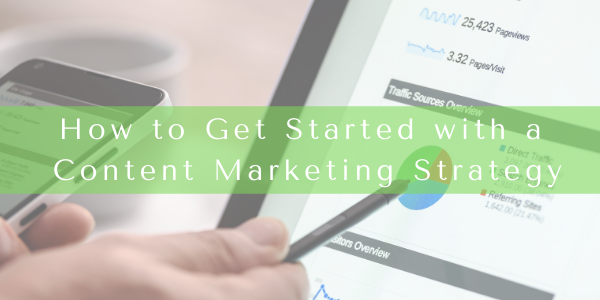
What is the buyer funnel? How do you make it work? There are several stages in the buyer funnel, each one with its own unique challenges and opportunities. Understanding the stages can help you plan your funnel and measure the results of each step. These are some tips that will help you create a buyer funnel that works. These tips will help you convert customers into visitors. In addition, you should track ROI. Here are the common stages of the buyer journey.
The buyer's journey through the stages
There are three main stages in the buyer's journey. Each requires marketing material that speaks to buyers at the right time. The first stage is when the buyer realizes that there is a problem. They research the issue. Once they have identified the problem they decide if they will pursue a solution. The buyer now has actionable information that can be used to improve their relationship. The buyer may be able to send them periodic emails about the machine's maintenance or customer support if it was a heavy-duty purchase. They might also be informed of any other products that may be sold by the company.
The consideration stage follows the awareness stage. The buyer understands the problem and researches the solutions to it. They may also be looking for information to help alleviate the problem, or they may be looking to make a purchase decision. The buyer may be researching different options, including your product, and looking for customer reviews and ratings to help them make the decision. Buyers might also seek coupons.

Analyzing the impact of each step
Determining the purpose of each stage in the buyer channel is the first step to measuring its impact. This includes identifying the needs of each buyer, assessing urgency, and identifying the problem or challenge. In this stage, it's important to make the solution obvious, as well as the benefits of your solution. Your solution should also be evaluated against other solutions.
Once you have defined your target market, it is now time to evaluate the effectiveness of each stage. This includes measuring high-funnel leads, time on your site, and brand search volume. Depending on your sales cycle, you may even want to measure the impact of your top-funnel marketing efforts on building audiences. Bottom line: The more you measure each stage of the buyer channel, the greater your chances of having a profitable sales channel.
Measuring ROI
It can be difficult to measure the ROI of buyer funnels, especially in industries with long sales cycles. While the close time can be anywhere from 2 weeks to 10 years, there are steps you can follow to make it easier. This guide will help you track ROI and increase conversion rates in your online marketing campaigns. No matter what industry you are in, measuring ROI will help your company make better business decisions. We will give you some pointers to help you get started.

Marketing ROI should not be measured solely from the viewpoint of consumers. That is why a buyer funnel is essential. It is essential to understand how each touchpoint impacts the purchase decision as well as how these interactions impact the overall ROI. DemandJump's measurement software helps you account each touchpoint and determine the ROI. Get a free trial to get started today.
FAQ
What are the benefits of content marketing?
By creating high-quality content, content marketing can help drive sales leads and sales. Content marketing can also provide a steady stream for original content that can promote products or services. Content marketing is a great way to increase brand awareness and trust among potential customers. Content marketing can also create a positive image of your company.
How do you create effective content?
The best way to create great content is to write about something that interests you. You must find topics that you are passionate about if you want to succeed at writing. It's about understanding yourself and using that information to help others. You'll be amazed at how easy it is to create quality content when you write for yourself.
How does Content Marketing Strategy help me?
Content Marketing Strategy gives access to data you might not otherwise be able to. This data can be used to determine which content types perform best.
It helps you to determine which strategies should be used to increase your site's traffic. It gives you insight into your audience to help you develop better content.
This allows you to spend less time worrying about which content is good and more on what works.
A Content Marketing Strategy can help you determine what messages resonate best with your audience.
By analyzing these messages, you can figure out what content they prefer. This will allow you to create similar pieces of content, and help keep your ideas alive.
A Content Marketing Strategy can help you track the performance of your content. You can quickly see which types of content converts best by sharing them more.
A Content Marketing Strategy can be summarized as the key to ensuring that your content performs well.
What is a Content Strategist and how do they work?
Content strategists are able to help brands tell their stories by creating engaging messages that resonate with their customers. They are storytellers, who use brand stories to inspire and motivate people to make decisions and take action.
Content strategists have the ability to develop strategies that attract current and future customers. For example, they use storytelling and data analytics to create compelling experiences that will inspire customers to visit stores, buy goods, and share their enthusiasm online.
They know how to incorporate social media platforms into their campaigns. They can also leverage technology tools such as virtual reality or video to deliver memorable customer experiences.
Content strategists are responsible for translating ideas into tangible plans that marketers can execute. This includes creating content that can be used on different media (such as television or print), and developing creative briefs. Budget management is also an important part of the job.
What is content marketing?
Content Marketing works because you produce valuable, engaging content that provides value.
Your audience will be more likely to trust you if you offer useful information, solve their problems, entertain them, or build relationships. People will respond positively to positive messages from brands they trust.
Things that are interesting to them are what people enjoy reading. If you write interesting content, readers will continue to return for more.
Your content should inspire people to act - whether they are buying your product, signing on for your newsletter, visiting you website, or sharing your article via Social Media.
The key to successful content marketing is to write compelling copy that engages your target market and provides them with the information they want and need.
What is content marketing?
This strategy involves creating quality and relevant content for your site or blog. This content can be text, images, or infographics. It helps to keep customers interested and attract new ones.
Statistics
- Forty-seven percent of buyers view 3 to 5 pieces of content before engaging with a sales representative. (mailchimp.com)
- According to our research, 65% of companies with very successful content marketing in 2021 ran content audits at least twice a year. (semrush.com)
- Progress indicators (0–100%) allow each team member to see how attainable each goal is and understand what remains to be accomplished. (semrush.com)
- We found that 40% of businesses don't have a documented strategy yet. (semrush.com)
- According to research compiled by Coschedule: Companies that publish 16+ blog posts a month get as much as 3.5x as much traffic as those that publish 0-4 posts a month. (criteo.com)
- Content marketing produces 3X more leads per dollar spent. Content marketing costs 62% less than traditional marketing. (criteo.com)
- Measure your goals with a progress indicator of 0-100%. Make your goals collaborative and transparent (semrush.com)
- This marketing strategy landed Ford a 15.4% conversion rate. (neilpatel.com)
External Links
How To
How to make your videos more awesome?
Video Marketing is one powerful tool in Content Marketing. It helps you connect to your audience, engage with them emotionally, and build trust. But how do we go from boring to awesome? Let's explore some simple ways to do this!
-
Tell a story. Every piece of communication is better if it has storytelling. Video marketing cannot work without storytelling. Telling stories is only possible if you are open to telling them. Do you find it entertaining? Educational? Inspiring? You can find inspiring stories on social media through videos and photos. Use these stories as inspiration to create your own.
-
Use images. Images are a faster way to convey emotions than words. Images enable us to make connections with others, and allow us empathy. Don't forget images! You can embed images directly in your blog posts, or add them to your slideshows.
-
Make it easy for people to share. If you want your viewers to spread the word, make it easy for them to do so. Add sharing buttons to your videos. Add social icons to your slideshows. Consider adding "Share" buttons to your videos if you are working on a YouTube channel.
-
Don't overdo it. Too many graphics and too many details can cause viewers to lose interest. Keep it simple. Few striking images will suffice to grab attention and hold it.
-
Keep it simple. People love short videos. If you want to create a buzz around your brand, try creating bite-sized videos that are only 5 minutes long.
-
Get feedback. Listen to what your audience has to say. Ask your audience what works and what doesn’t. Ask them for their feedback to improve your content.
-
Plan. Once you've created your first video, think about how you can create more. Can you create a series? Perhaps you could create a playlist of the most popular videos.
-
Test, test, test. You don't want to release a clip and then find that nobody is watching it. Make sure you test the video with your audience before releasing it. You will be surprised at the reaction you get. Make changes based upon these results.
-
Repeat. Keep going until you find your perfect formula. Once you have a good idea of what works, it will be easy to create stunning videos.
-
Measure the results. It is important to measure your videos' success. How did they perform What are the preferences of certain audiences? These questions can help you refine your strategy.
-
Make adjustments as necessary. Don't stop learning once your video campaign is up and running. Learn from your failures and adapt your plans accordingly. The best marketers never stop learning.
-
Enjoy it. Video marketing isn’t hard but takes patience. As you gain experience, new strategies, tactics, and ideas will be available to you to help grow your business.